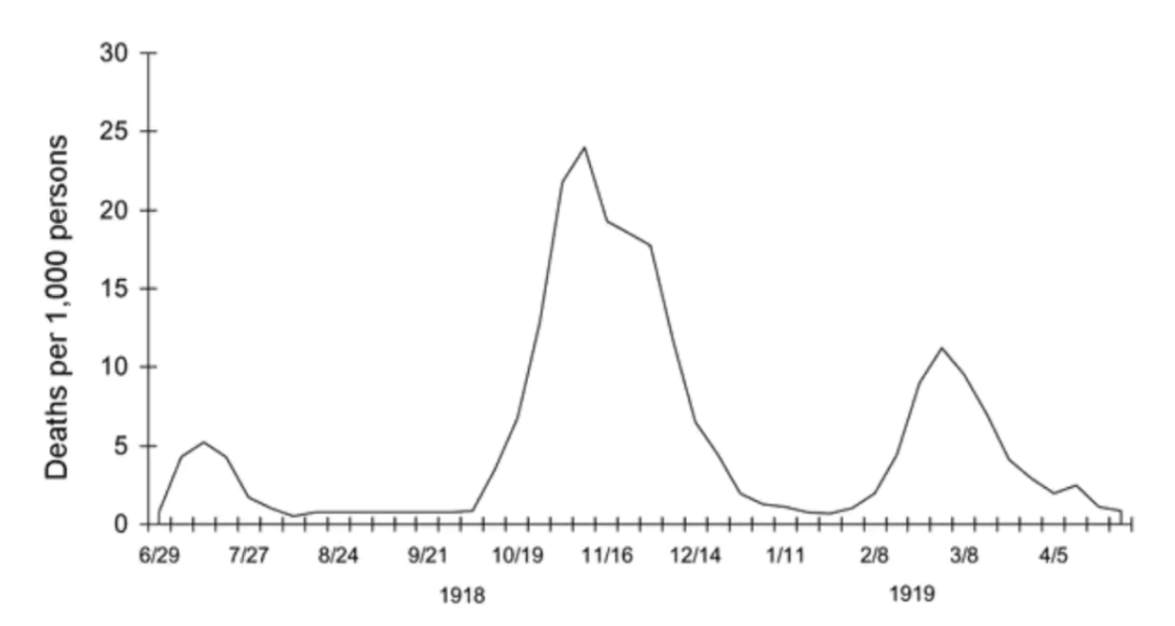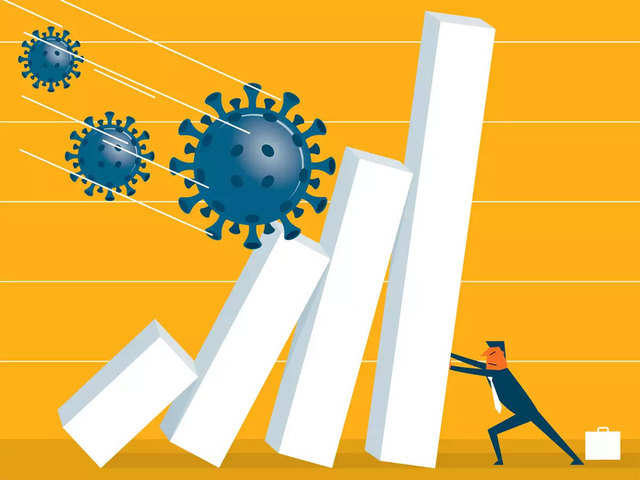COVID-19 infections are on the rise, again, how businesses need to prepare themselves to fight the Second Wave.
As many experts expected, a second wave of COVID-19 has reared its head. Since last month, hospitalizations related to coronavirus have increased in Maharashtra, Delhi, Kerala, Rajasthan, Gujarat, Karnataka and many other states in India.
This is not welcome news for businesses. Throughout the world, businesses were shut down for a long period of time earlier this year, and some have closed permanently.
The past couple of months have been tough, and there are many difficult days ahead. The struggling economy, a collapsing health system, and a tremendous amount of loss are making individuals and businesses terribly afraid. We are unsettled because the world as we know it has shut down temporarily.
For many, COVID-19 has led to an era of unprecedented changes and uncertainty. For businesses, these issues have shown up in terms of business continuity, operational standards, supply chain disruptions, and changes in the way we work.
It is important for us to learn from the past, and to realize that having the knowledge to deal with these changes is the key to success. Within roughly the last 100 years, there have been four pandemics, and each offered important lessons for businesses small and large. One of the main lessons that arose from past pandemics is that infections come in waves. From recent statistics, it appears the second wave of COVID-19 is here. Unfortunately, this is likely not the last wave, as it is expected that infections will continue to spread until herd immunity is reached, or through mass vaccination.
When examining the 1918 pandemic, we see that three waves of infections took place according to the Center for Diesel Control and Prevention (CDC): the first wave in spring 1918, the second wave in fall 1918, and a third in winter 1918-19. Even though the spread of the H1N1 virus subsided in the summer of 1918, the subsequent wave in the fall became the most fatal in the United States. Furthermore, waves of infections were seen in 1957-58, with the H2N2 virus, and yet again in 2009-2010 with the swine flu. Therefore, even if the number of COVID-10 cases decline, which they have done so over the last few months, businesses should be vigilant and remain prepared.

How You Can Prepare
First, businesses need to take a close look at their operations and business model. Business owners and managers need to be fully prepared for a second, and potentially third or fourth, wave of infections. To do so, it is imperative to develop and plan your business model and operations from top to bottom accordingly.
Also, it is important for business owners and managers to be proactive with any needed changes, and thoroughly communicate needs and changes to staff members. Business leaders also need to continually watch for new developments and take this time to examine weaknesses and threats of the business to refine the plan now before moving forward.
Moreover, companies need to put in place strategic preparedness plans and test them thoroughly before rolling them out. It is also crucial to increase flexibility, expand supply chain options, and identify solutions for worst case scenarios. Most importantly, businesses need to create models to understand all the different scenarios that will impact their customers, employees, and suppliers. This is particularly important for businesses that rely heavily on a large staff and that would be deeply impacted by employees who get sick.
Big and small businesses face an uncertain future. They rely on a predictable world in order to make money, and nothing is predictable right now. Employees cannot come into the office and any business has to be done online. Profits are plummeting during the crisis. And while governments are promising to help, funds are limited. But businesses can survive if they are able to adapt. The world most likely will not go back to as it was before, and this isn’t necessarily a bad thing. Here are few important ways big and small businesses need to adapt to survive COVID-19.
New Employee Dynamic
While it has long been possible for people to work from home in many industries, only now are businesses taking advantage of the possibility. There is a lot of potential in a shift towards remote work, including a lack of commute time and money saved on office space. However, businesses need to adopt a new employee dynamic.
Many business people have complained about a similar thing. Staff and supervisors are holding more meetings than ever before, even though they are not strictly necessary. It seems like supervisors want a way to make sure staff are working, and staff are eager to prove themselves.
This dynamic is a problem that stems from most countries’ schooling systems, in which more importance is placed on attendance than output. In workplaces, we place far too much emphasis on an eight hour day. Businesses need to learn that output is what matters. If employees are getting their jobs done, it does not matter just how long they spend “at work.” Without this attitude, endless meetings will negate any benefits gained from staff not having to commute to work.
Create your Online Presence
A lot of traditional businesses have become complacent due to consistent success. They have not had to work on their online presence, as they expect customers to find them in an old-fashioned way, or already have a huge client base. However, this is likely to change permanently.
The more people do business online (whether this is shopping for goods, finding services, or building B2B partnerships) the more it will become the norm. That’s not to say it isn’t already the norm. However, even those industries which have remained mostly traditional will now have to adapt.
If you do not have a strong online presence, now is the time to build one. Start by creating a website that can handle a high amount of traffic. When it comes to hosting, use a VPS rather than shared hosting. It will cost more, but since everyone is online right now, there is a lot of potential for a high volume of visitors.
Prepare Business Continuity Plans
Someone made the comment that individuals are expected to have six months of savings in case anything goes wrong while many businesses seem to think they can survive by force of will. Unfortunately, these businesses are learning how perilous their complacency has been.
So many businesses have not gotten around to creating continuity plans, assuming that no crisis would cripple them in this way. Now, they have no guidelines to follow to help them survive. When times are good, continuity seems unimportant. But that is exactly when these plans need to be created.
If they are able to make it through this crisis, businesses will need to scramble to get a continuity plan in place. The world as we know it is not as certain as it was three months ago. Businesses need to take this lesson more than any other out of COVID-19.
Good businesses should be able to survive and rebuild after COVID-19. However, they need to take this time to reevaluate how they operate and adapt to a new reality.
Change Your Marketing and Sales Strategy
Change is surely the most adequate coronavirus business response. You will have to adapt your business processes to physical and financial limitations. Here are some ideas you could start with:
- Offer online deals: discounts, certificates, pricing changes, etc.
- Focus on serving your customers through digital channels. Offer consultations and advice through messengers, face-to-face video conferences, online broadcasts, etc.
- Conduct online marathons, questions & answers, and video product demos.
- Offer additional services that are in demand during the quarantine, such as pick up services of a wrapped/sealed order without entering the store, “non-contact” food delivery, etc.
In the wake of coronavirus, business continuity is your primary goal. These steps will help you retain customers. Show them that your company is socially responsible and well-equipped to survive COVID-19.
Although it is hard to make monumental changes quickly, businesses cannot brush off such important steps, and need to be very thorough in their preparedness. We at DeviceNext with collaboration with various consultants are helping businesses throughout this process, and uncovering weaknesses and opportunities owners were not aware of before. We are currently offering a free consultation to businesses, to provide an overview of how we believe we can help avoid catastrophes and major setbacks.




